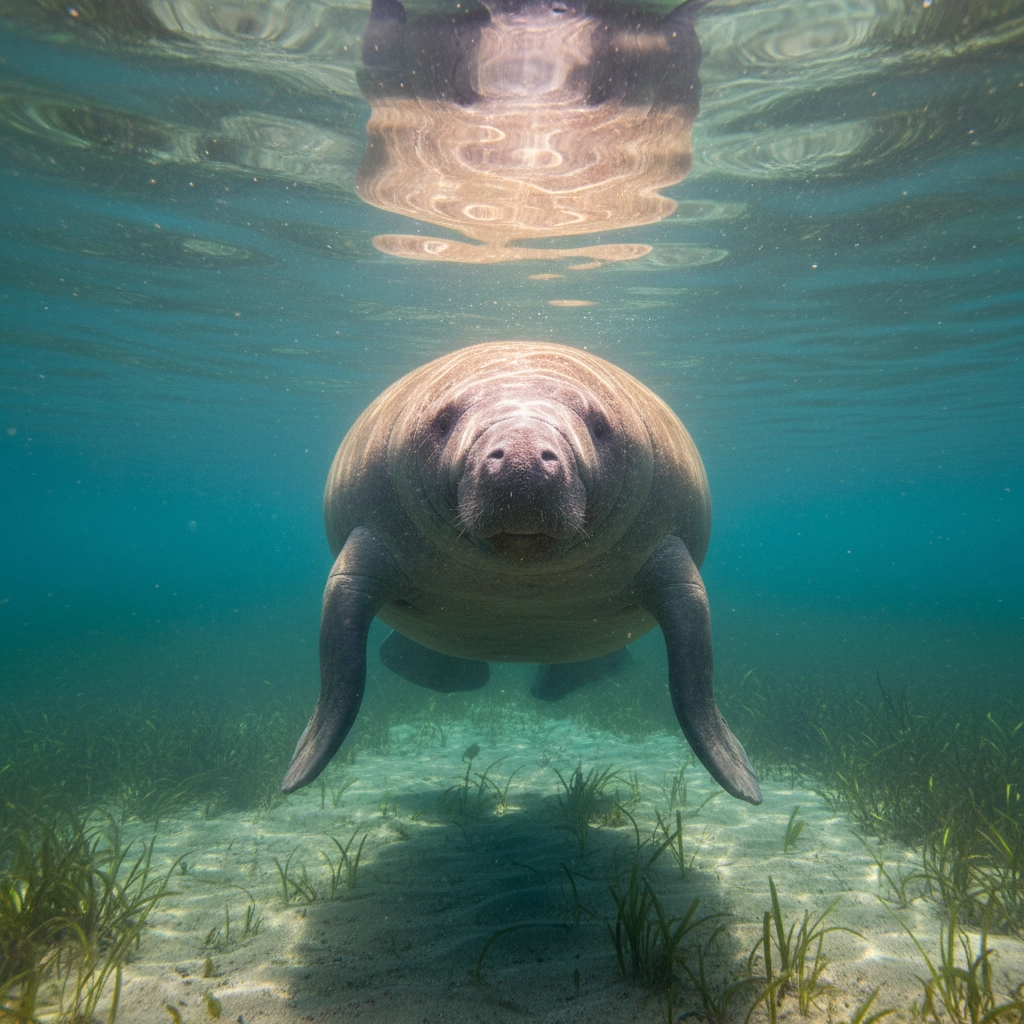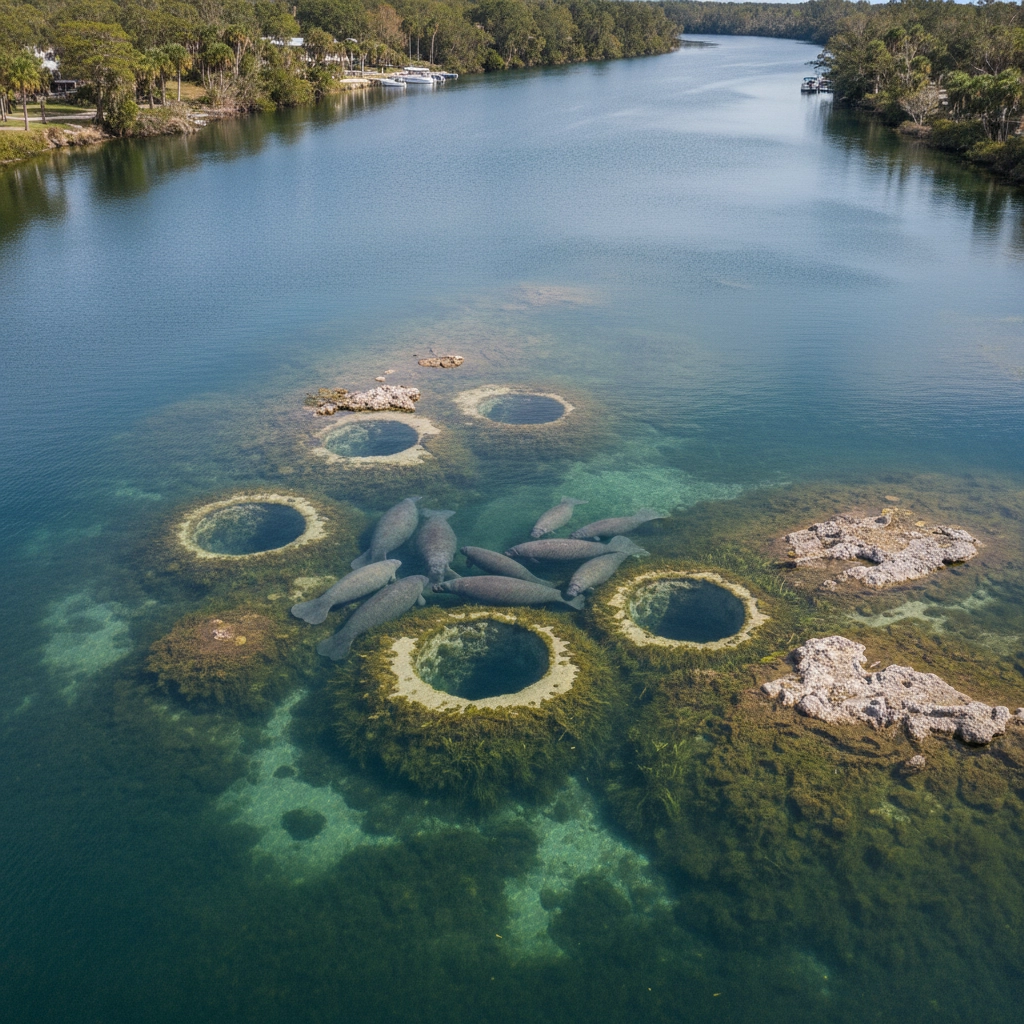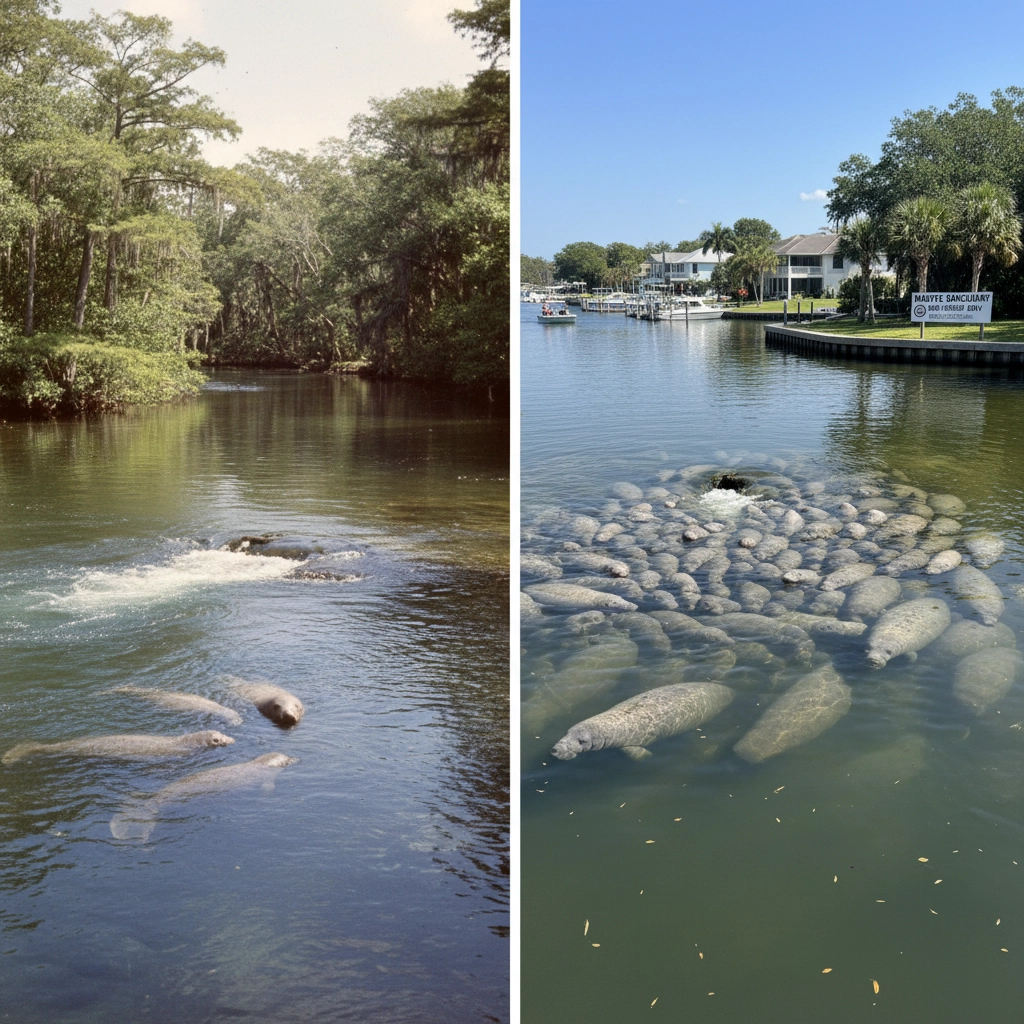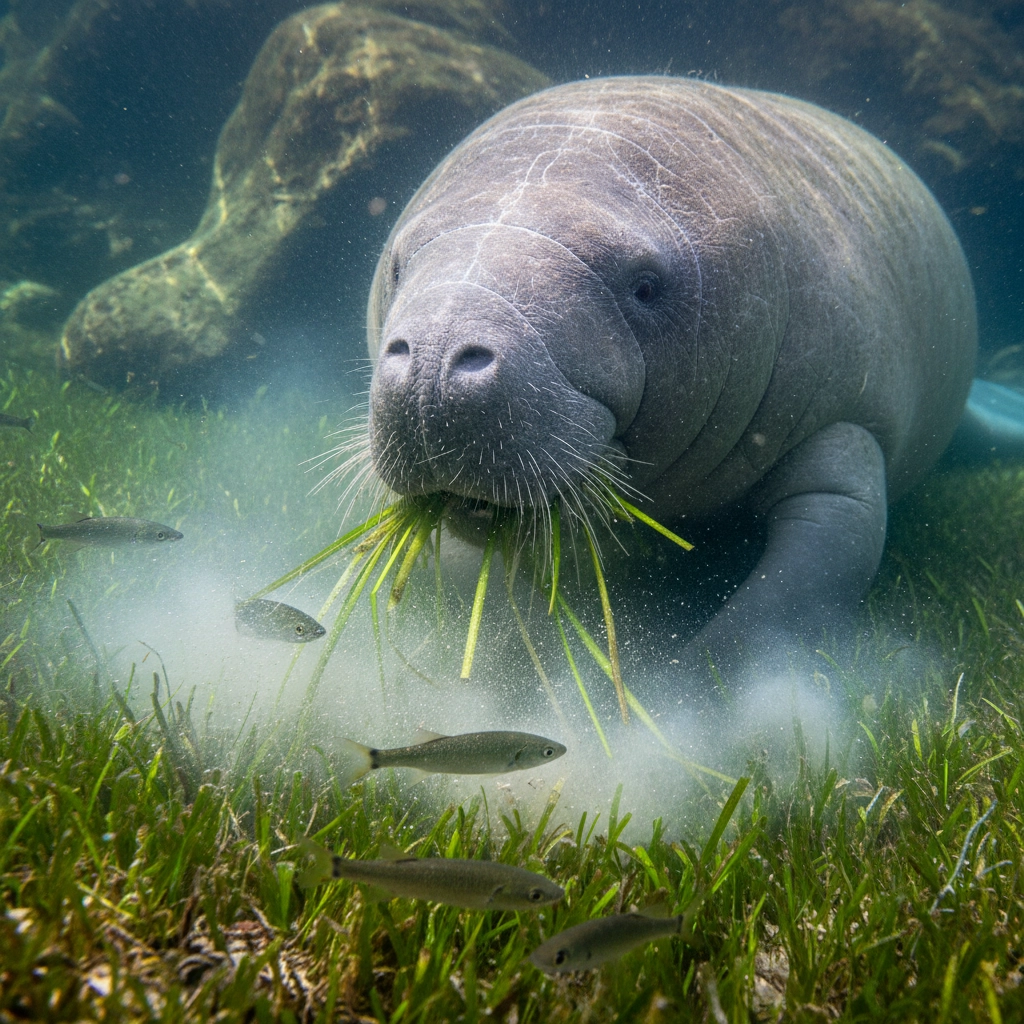Why Aquifer Springs Are the Lifeline for Manatees: Science and Conservation in Action
- Caleb Mullenix
- 4 hours ago
- 6 min read
Understanding the critical relationship between Florida's aquifer springs and manatee survival represents one of the most compelling case studies in marine conservation science. For educators seeking to provide students with meaningful hands-on learning experiences, Crystal River's spring system offers an unparalleled opportunity to explore aquifer science, thermal ecology, and conservation biology in action.
The springs of Crystal River maintain a constant temperature of 72°F year-round, emerging from the vast Floridan aquifer system that underlies much of Florida. This seemingly simple fact represents the foundation of manatee survival strategy and demonstrates how geological processes directly impact wildlife populations.
The Science Behind Thermal Refuges
Begin by understanding the fundamental physics that make springs essential for manatee survival. The Floridan aquifer, a massive underground limestone formation, stores water at consistent temperatures deep below the earth's surface. When this water emerges through natural openings as springs, it maintains the stable thermal conditions that manatees require for survival.
Manatees are marine mammals with limited thermoregulatory capacity. Unlike dolphins or whales, manatees cannot generate sufficient body heat to maintain normal metabolic functions when water temperatures drop below approximately 68°F. During Florida's winter months, ambient water temperatures can fall into the 50s and 60s, creating life-threatening conditions for these gentle giants.

Students observing manatee behavior in Crystal River can witness firsthand how these animals congregate around spring vents during cooler periods. This behavioral response demonstrates the direct connection between geological processes and wildlife survival strategies, providing concrete examples of interdisciplinary science in action.
The physiological consequences of cold exposure in manatees include cold stress syndrome, which manifests as lesions similar to frostbite, cessation of feeding behavior, and depletion of critical fat reserves. Understanding these biological responses helps students connect thermal physics with animal physiology and survival ecology.
Understanding Manatee Behavior and Site Fidelity
Emphasize the importance of behavioral ecology in conservation science by exploring manatee site fidelity patterns. Manatees exhibit remarkable loyalty to specific warm-water locations, returning to the same springs year after year throughout their lifetimes. This behavior, known as site fidelity, represents a learned cultural trait passed from mothers to calves during the critical two-year nursing period.
The cultural transmission of warm-water site knowledge demonstrates how animal behavior evolves through social learning rather than genetic programming alone. Mother manatees actively teach their offspring the locations of essential thermal refuges, creating generational knowledge that becomes embedded in local manatee populations.
Students can observe this teaching process during Crystal River expeditions, noting how adult females consistently guide calves to specific spring areas and demonstrate appropriate behaviors for accessing warm water while avoiding dangerous situations.

Document the implications of site fidelity for conservation planning. When manatees become dependent on specific locations, the loss or degradation of those sites can have catastrophic consequences for entire population segments. This behavioral inflexibility creates both conservation challenges and opportunities for targeted protection efforts.
From Natural Springs to Human Dependence
Address the historical transformation of manatee thermal refuge patterns to understand current conservation challenges. Prior to extensive human development in Florida during the 1800s, manatees naturally dispersed to numerous spring systems throughout the state for winter warmth. However, urbanization, agricultural development, and over-pumping of the Floridan aquifer significantly altered this relationship.
Currently, approximately 66% of Florida's manatee population depends on artificial warm-water sources, primarily power plant discharge sites, rather than natural springs. This dramatic shift represents an evolutionary adaptation to human-altered landscapes, but creates significant vulnerabilities for long-term population stability.
The reliance on artificial warm-water sources poses immediate conservation concerns. Power plants eventually retire from service, and when warm-water discharge ceases, manatees may remain at defunct facilities, waiting for heat sources that will never return. Historical cases document manatee mortality events following power plant shutdowns, demonstrating the deadly consequences of this artificial dependence.
Students examining this human-wildlife interaction can explore how technological solutions create unexpected ecological dependencies and investigate the complex relationship between industrial development and wildlife conservation.
The Ecosystem Connection
Explore the bidirectional relationship between manatees and spring ecosystems to demonstrate ecological interconnectedness. While springs provide essential thermal refuges for manatees, these marine mammals actively contribute to spring ecosystem health through their feeding and movement behaviors.
Manatees function as ecosystem engineers within spring systems, consuming large quantities of aquatic vegetation daily. This grazing activity prevents algae and invasive plant overgrowth that would otherwise compromise spring water quality and ecosystem balance. By maintaining clear water conditions, manatees enable sunlight penetration that supports native eelgrass growth and oxygen production essential for diverse aquatic communities.

Additionally, manatee movement through spring waters creates beneficial sediment circulation that promotes nutrient distribution and maintains dynamic, healthy ecosystems. Students can observe these ecological services directly, documenting feeding behaviors and vegetation management that manatees provide to their habitat.
The concept of ecosystem services demonstrates how species conservation benefits entire ecological communities rather than single organisms. Protecting manatees inherently protects spring ecosystems, aquifer health, and the numerous species that depend on these interconnected systems.
Conservation Challenges and Student Opportunities
Identify the primary threats facing spring-dependent manatee populations to understand current conservation priorities. Over-pumping of the Floridan aquifer reduces spring flows, threatening the volume of warm water available for manatee survival. Human population growth within spring watersheds increases demands on aquifer resources while degrading water quality through nutrient pollution.
Physical habitat modifications, including port development, inlet channelization, and dredging activities, alter spring accessibility and create additional hazards for manatees seeking thermal refuges. These cumulative impacts demonstrate how multiple human activities can compound to threaten wildlife populations.
The Florida Fish and Wildlife Conservation Commission and U.S. Fish and Wildlife Service have developed comprehensive response strategies through the Manatee Warm-Water Habitat Action Plan. This initiative focuses on establishing minimum spring flows, preventing mortality from power plant operational changes, enhancing seagrass restoration, and improving manatee access to natural warm-water sources.
Students can contribute meaningfully to these conservation efforts through citizen science programs, water quality monitoring, and habitat restoration activities. Participating in real scientific research provides authentic learning experiences while generating data that informs management decisions.
Hands-On Learning in Crystal River
Design student expeditions that integrate scientific observation, data collection, and conservation service to maximize educational impact. Begin with pre-trip preparation that covers aquifer geology, thermal ecology, and current conservation challenges facing Crystal River's ecosystem.
During field experiences, establish systematic observation protocols that allow students to document manatee behavior, spring characteristics, and human impacts. Encourage students to record water temperatures, flow rates, vegetation conditions, and wildlife interactions to build comprehensive understanding of spring ecosystem dynamics.

Implement service learning components that allow students to contribute directly to conservation efforts. Partner with local organizations to participate in seagrass restoration, invasive species removal, or water quality monitoring programs that support spring ecosystem health.
Connect field observations to broader scientific concepts by analyzing data collected during expeditions. Students can graph temperature variations, map manatee distribution patterns, and evaluate the effectiveness of conservation interventions using their own research data.
Facilitate reflection activities that help students synthesize scientific learning with conservation ethics. Discuss how individual actions impact aquifer health, explore career pathways in marine science and conservation, and develop action plans for continued environmental stewardship.
Preparing Future Conservation Scientists
Establish clear learning objectives that connect Crystal River experiences to academic standards and career preparation. Students should understand aquifer hydrology, thermal ecology, behavioral biology, and conservation science principles through direct observation and hands-on research.
Emphasize the interdisciplinary nature of conservation science by demonstrating how geology, biology, chemistry, and social science integrate to address complex environmental challenges. This comprehensive approach prepares students for the collaborative problem-solving required in professional scientific careers.
Encourage students to view themselves as active participants in conservation efforts rather than passive observers of natural processes. Provide opportunities for students to present research findings, advocate for policy changes, and engage community members in conservation education.
The springs of Crystal River offer irreplaceable opportunities for students to witness the intersection of geological processes, wildlife biology, and human impacts in real-time. Through carefully designed educational expeditions, students gain scientific knowledge, develop research skills, and cultivate the environmental ethic necessary for effective conservation leadership.
Ensuring the protection of Florida's aquifer springs requires the next generation of scientists, policymakers, and citizens to understand the complex relationships that sustain these critical ecosystems. Educational experiences that combine rigorous scientific learning with meaningful conservation service prepare students to address the environmental challenges of the future while fostering lifelong connections to Florida's natural heritage.



Comments